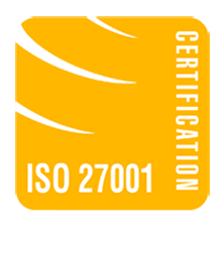
Essential Supply Chain KPIs for Maximizing ROI on Supply Chain Planning Investments
In the dynamic world of supply chain management, where studies show that up to 43% of businesses face challenges related to inventory management, selecting the right software is paramount for optimizing operations and maximizing return on investment (ROI). However, to ensure success, it’s crucial for supply chain directors to focus on key performance indicators (KPIs) that directly impact their bottom line. Here’s a concise overview of the essential KPIs to consider when evaluating supply chain planning software:
Inventory Accuracy
- Definition: The congruence between recorded inventory and physical stock.
- Impact on ROI: Accurate inventory data is the bedrock of effective demand forecasting, planning, and cost management. By minimizing discrepancies between recorded and actual stock levels, organizations can avoid overstocking or stockouts, leading to improved resource allocation and reduced carrying costs.
Order Fulfillment Rate
- Definition: The percentage of orders fulfilled on time and in full (OTIF).
- Impact on ROI: Customer satisfaction hinges on timely and complete order fulfillment. High order fulfillment rates not only enhance customer loyalty but also reduce the likelihood of returns or cancellations. This directly translates into increased revenue and long-term profitability.
Stock Turnover Rate
- Definition: The number of times stock is sold and replaced over a period.
- Impact on ROI: A high stock turnover rate signifies efficient inventory management and optimized cash flow. By swiftly converting inventory into sales, organizations can minimize holding costs and capitalize on market demand, thereby boosting profitability and liquidity.
Stockout Rate
- Definition: The frequency of inventory shortages that result in unmet demand.
- Impact on ROI: Stockouts not only lead to lost sales but also damage brand reputation and customer trust. By accurately predicting demand and maintaining adequate inventory levels, businesses can mitigate the risk of stockouts, ensuring consistent revenue streams and sustained growth.
Carrying Cost of Inventory
- Definition: The total cost of holding inventory, including storage, insurance, and obsolescence.
- Impact on ROI: Excessive inventory carrying costs can eat into profit margins and tie up valuable capital. By optimizing inventory levels and streamlining storage processes, organizations can minimize carrying costs, freeing up resources for strategic investments and expansion initiatives.
As you navigate the complex landscape of supply chain planning software, it’s essential to partner with a solution provider that understands your unique challenges and goals. Flowlity offers cutting-edge software solutions tailored to optimize supply chain performance and drive tangible business outcomes. With Flowlity’s innovative tools and expertise, you can unlock new levels of efficiency, agility, and profitability in your supply chain operations.
Conclusion
In conclusion, by prioritizing these essential KPIs and leveraging advanced software solutions like Flowlity, supply chain directors can make informed decisions that maximize ROI and propel their organizations towards sustainable success.

E-commerce, Ecology, and Continuous Improvement
Explore the economic impact of poor retail inventory management & a French law on unsold goods, with e-commerce’s ecological shift.

E-commerce trends: Tips by Jeremie Serout!
What are the latest e-commerce trends and best practices in e-commerce? Jérémie Serout, Sales Manager at parcelLab is sharing tips and customer stories with us!

Convenience and the E-commerce Supply Chain
Explore how the e-commerce landscape has evolved, driven by increasing complexity, rising consumer expectations, and global competition.

